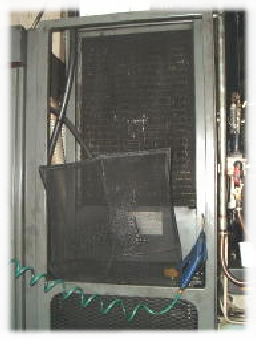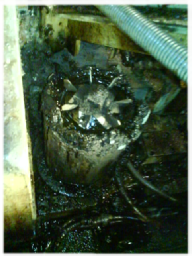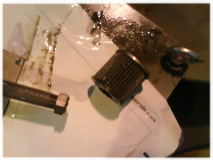SURESERV Ltd
Machine Tool Service Engineers
Birmingham



An Introduction to Total Productive Maintenance (TPM)
What is Total Productive Maintenance (TPM) ?
It can be considered as the medical science of machines. Total Productive Maintenance (TPM) is a maintenance program which involves a newly defined concept for maintaining plants and equipment. The goal of the TPM program is to markedly increase production while, at the same time, increasing employee morale and job satisfaction.
TPM brings maintenance into focus as a necessary and vitally important part of the business. It is no longer regarded as a non-
Why TPM ?
TPM was introduced to achieve the following objectives. The important ones are listed below.
Avoid wastage in a quickly changing economic environment.
Producing goods without reducing product quality.
Reduce cost.
Produce a low batch quantity at the earliest possible time.
Goods send to the customers must be non defective.
To avoid unexpected down time.
Types of maintenance
1. Breakdown maintenance :
It means that people waits until equipment fails and repair it. Such a thing could be used when the equipment failure does not significantly affect the operation or production or generate any significant loss other than repair cost. This can be avoided by implementing TPM
2. Preventive maintenance ( 1951 ):
It is a daily maintenance ( cleaning, inspection, oiling and re-
2a. Periodic maintenance ( Time based maintenance -
Time based maintenance consists of periodically inspecting, servicing and cleaning equipment and replacing parts to prevent sudden failure and process problems. Typically periodic maintenance will take place every 3 -
2b. Predictive maintenance :
This is a method in which the service life of important part is predicted based on inspection or diagnosis, in order to use the parts to the limit of their service life. Compared to periodic maintenance, predictive maintenance is condition based maintenance. It manages trend values, by measuring and analyzing data about deterioration and employs a surveillance system, designed to monitor conditions through an on-
3. Corrective maintenance ( 1957 ) :
It improves equipment and its components so that preventive maintenance can be carried out reliably. Equipment with design weakness must be redesigned to improve reliability or improving maintainability
4. Maintenance prevention ( 1960 ):
It indicates the design of a new equipment. Weakness of current machines are sufficiently studied ( on site information leading to failure prevention, easier maintenance and prevents of defects, safety and ease of manufacturing ) and are incorporated before commissioning a new equipment.
Steps in introduction of TPM in a organization
Step A -
STEP 1 -
Proper understanding, commitment and active involvement of the top management in needed for this step. Senior management should have awareness programmes, after which announcement is made to all. Publish it in the house magazine and put it in the notice board. Send a letter to all concerned individuals if required.
STEP 2 -
Training is to be done based on the need. Some need intensive training and some just an awareness. Take people who matters to places where TPM already successfully implemented.
STEP 3 -
TPM includes improvement, autonomous maintenance, quality maintenance etc., as part of it. When committees are set up it should take care of all those needs.
STEP 4 -
Now each area is benchmarked and fix up a target for achievement.
STEP 5 -
Next step is implementation leading to institutionalizing wherein TPM becomes an organizational culture. Achieving PM award is the proof of reaching a satisfactory level.
STEP B -
This is a ceremony and we should invite all. Suppliers as they should know that we want quality supply from them. Related companies and affiliated companies who can be our customers, sisters concerns etc. Some may learn from us and some can help us and customers will get the communication from us that we care for quality output.
STAGE C -
In this stage eight activities are carried which are called eight pillars in the development of TPM activity.
Of these four activities are for establishing the system for production efficiency, one for initial control system of new products and equipment, one for improving the efficiency of administration and are for control of safety, sanitation as working environment.
STAGE D -
By all there activities one would has reached maturity stage. Now is the time for applying for PM award. Also think of challenging level to which you can take this movement.
Spindle oil Chillier that will have to be replaced
And this was a result of not been regularly cleaned.
The contamination between the heat exchanger
fins now means the unit will have to be replaced.
This company has had to use an airline to try to
elevate the increased temperature, as the chillier
can no longer keep the oil cool. The cost involved
is now greatly increased with increased down time.
Question ?
"Why carry out maintenance to a machine that is working ?"
Because below the surface things may not be as they seem. Take a look at the next photo,.this was a strain filter that we replaced on a TPM visit. As you can see, this filter is useless because any partials can return to the hydraulic cylinders and motors thus reducing the lift span of the hydraulic. The split was caused because the oil had to force its way past the blocked filter element.


TPM


